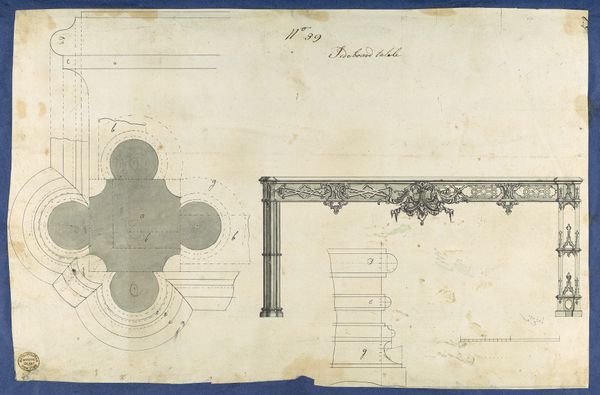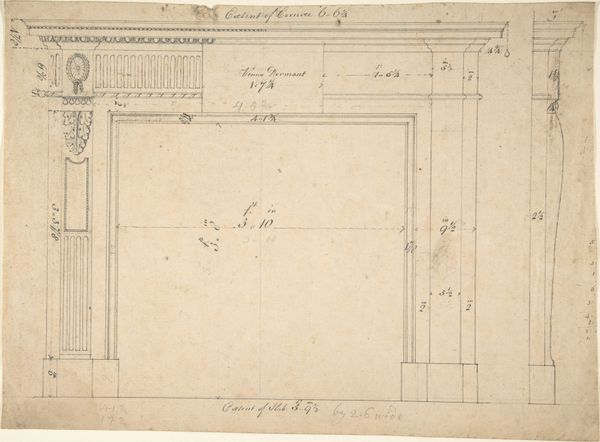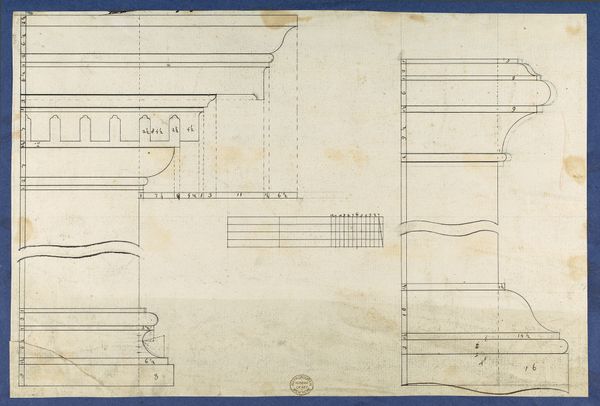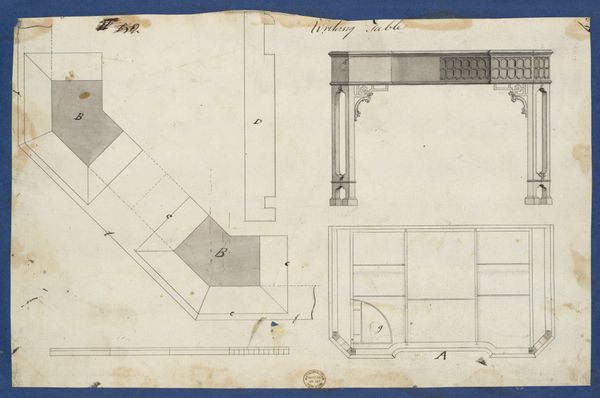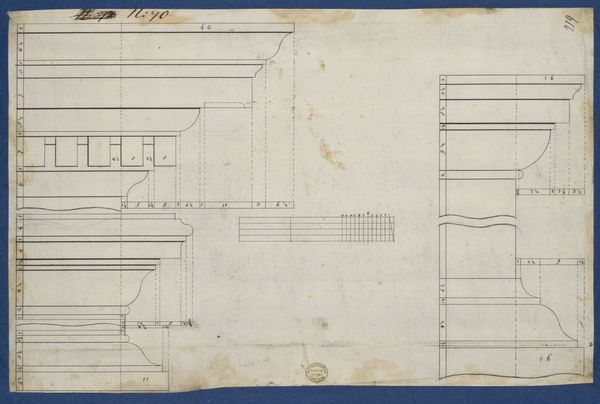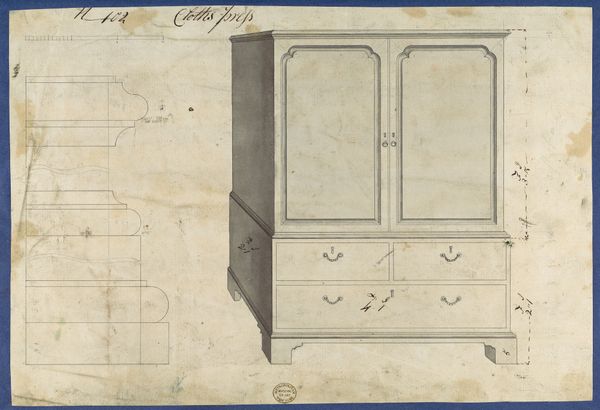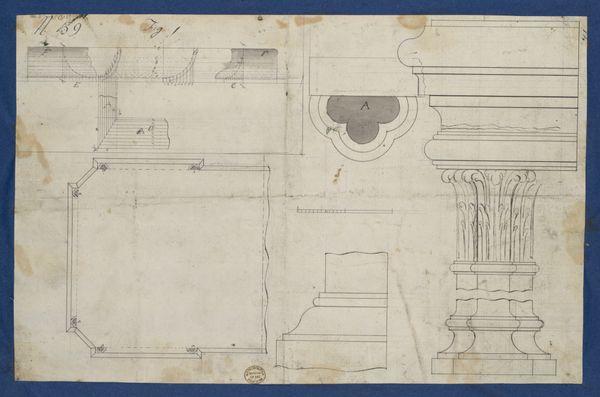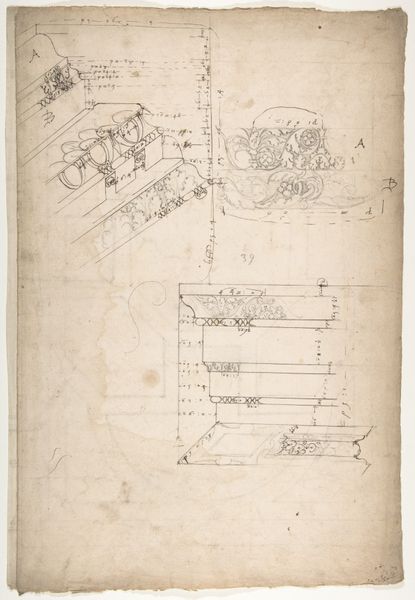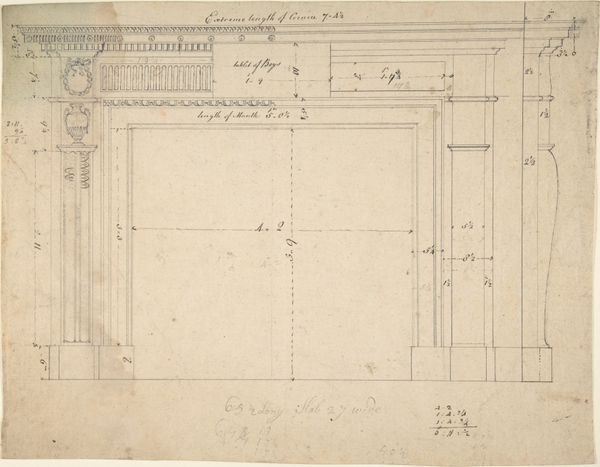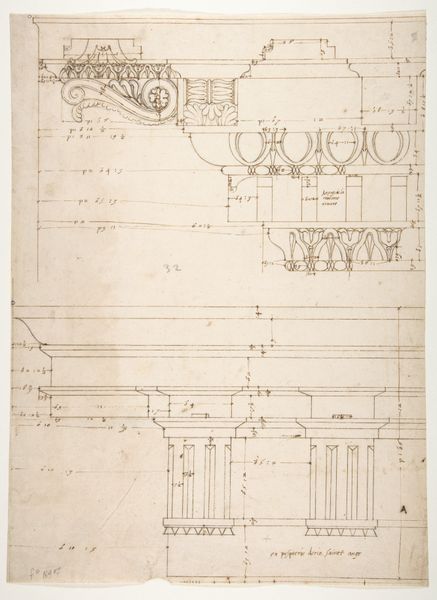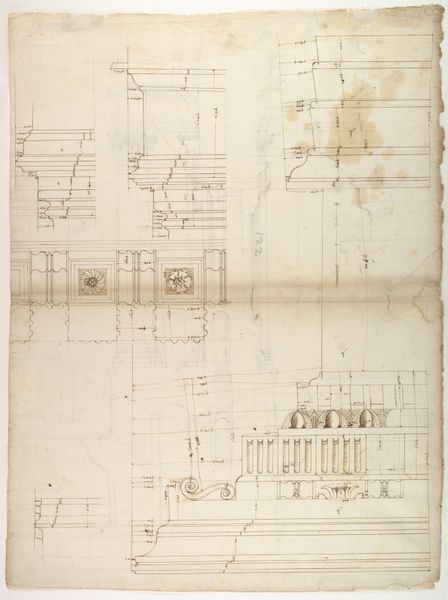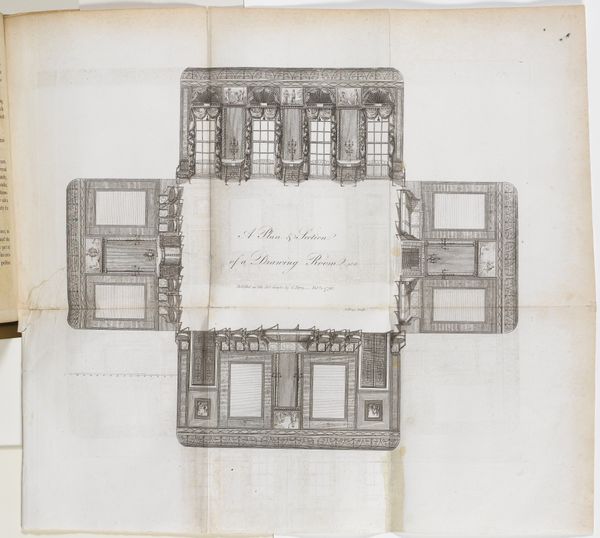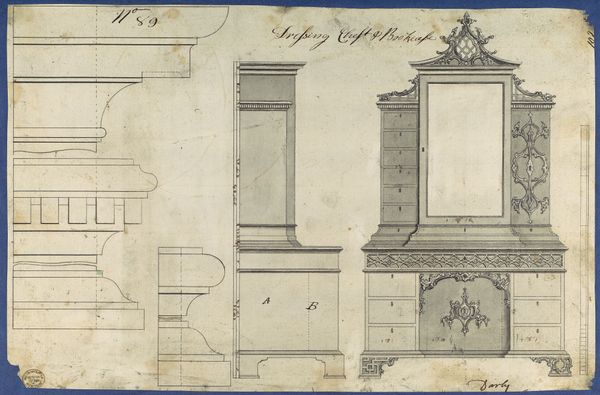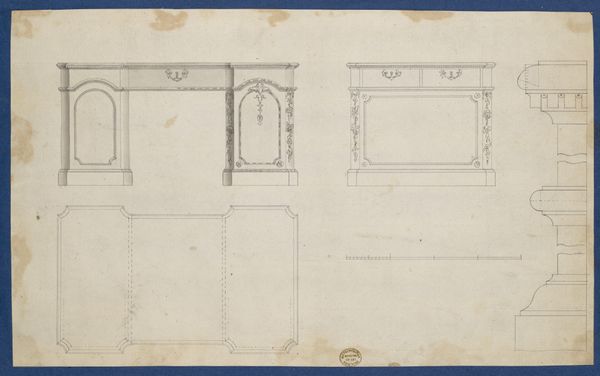
Writing Table, from Chippendale Drawings, Vol. II 1753
0:00
0:00
drawing, print, pencil
#
drawing
#
neoclacissism
# print
#
coloured pencil
#
geometric
#
pencil
#
decorative-art
#
mixed media
#
watercolor
Dimensions: sheet: 8 9/16 x 13 9/16 in. (21.7 x 34.4 cm)
Copyright: Public Domain
Curator: This architectural drawing, "Writing Table," comes to us from Thomas Chippendale’s design book, "Chippendale Drawings, Vol. II," created around 1753. Editor: It's striking how stark and geometrical it is, like a blueprint filled with encoded information, not quite furniture and not quite abstract art, residing somewhere in between. Curator: Exactly. These weren't just idle sketches. They were integral to Chippendale's marketing, showcasing the breadth of his design capabilities. Consider the rise of the merchant class in the 18th century. Designs like this gave them access to high style through commissions and bespoke crafting. Editor: Yes, I see it more as a symbol, rather than mere blueprint. Look at the repetition of forms, almost like hieroglyphs detailing the components of status. It's about aspirational domesticity, crafting identity as much as a usable piece of furniture. Note the detailed flourishes. Curator: It really highlights a tension, doesn't it? On one hand, this rise of Neoclassicism promises universality, order and rationality. And yet, furniture design had to appeal to very personal tastes, and evolving sensibilities. Editor: The drawing also shows how aesthetics began democratized with these pattern books. Before, artistry resided largely in guilds and aristocratic patronage. But this object shows the advent of entrepreneurial authorship, where one’s brand, if you will, could elevate cultural life more broadly. It reflects changing class dynamics. Curator: And yet, what resonates is this inherent optimism about how our lives can be improved through thoughtfully constructed objects and how society projects power. Editor: Power certainly, and beauty. I walk away seeing something aspirational, reflecting, at its core, an optimism that beautiful and functional form could uplift ordinary lives, at a key period in history when wealth shifted and changed everything. Curator: I’m fascinated about how his drawings, through print, facilitated not just aesthetic choices, but actively participated in reshaping ideas about what ‘good taste’ could represent for an evolving Britain.
Comments
No comments
Be the first to comment and join the conversation on the ultimate creative platform.
